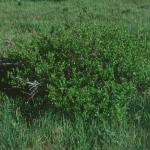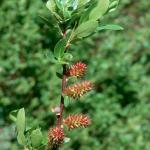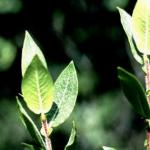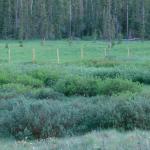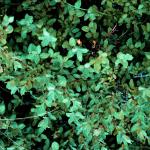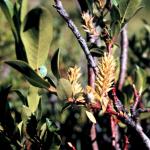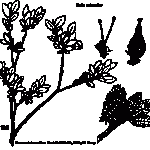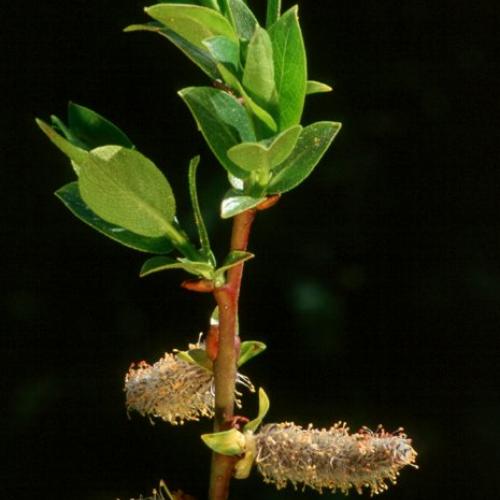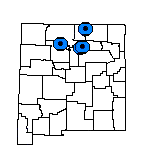Salix arizonica (Arizona Willow)
| USFWS | State of NM | USFS | BLM | Navajo Nation | State Rank | Global Rank | R-E-D Code | NMRPTC Status | Strategy Status |
|---|---|---|---|---|---|---|---|---|---|
| SEN | S1 | G2G3 | 1-2-1 | R | SS |
| Overall Conservation Status | Documented Threats | Actions Needed |
|---|---|---|
| EFFECTIVELY CONSERVED | Livestock ranching/farming |
Population trend monitoring, document threat imapcts (grazing, drought) |
*Argus, G.W. 1995. Salicaceae Part 2: Salix. Journal of the Arizona-Nevada Academy of Science 27:39-62.
Dorn, R.D. 1975. A systematic study of Salix section Cordates in North America. Canadian Journal of Botany 53:1491-1522.
*Prendusi, T., D. Atwood, B. Palmer and R. Rodriguez. 1996. Interagency conservation biology program for Arizona willow (Salix arizonica Dorn). Pp. 224-230 In: Maschinski, J., H.D. Hammond and L. Holter, techical editors. Southwestern rare and endangered plants: Proceedings of the second conference. General Technical Report RM-GTR-283. USDA-Forest Service, Rocky Mountain Forest and Range Experiment Station, Fort Collins, Colorado.
Strohmeyer, S. and J. Maschinski. 1996. Elk and cattle herbivory on Arizona willow (Salix arizonica). Pp. 187-192 In: Maschinski, J., H.D. Hammond, and L. Holter, techical editors. Southwestern rare and endangered plants: Proceedings of the second conference. General Technical Report RM-GTR-283. USDA-Forest Service, Rocky Mountain Forest and Range Experiment Station, Fort Collins, Colorado.
*Decker, K. 2006. Salix arizonica Dorn (Arizona willow): A technical conservation assessment. [Online]. USDA Forest Service, Rocky Mountain Region. Available: http://www.fs.fed.us/r2/projects/scp/assessments/salixarizonica.pdf [accessed September 2011].
For distribution maps and more information, visit Natural Heritage New Mexico


